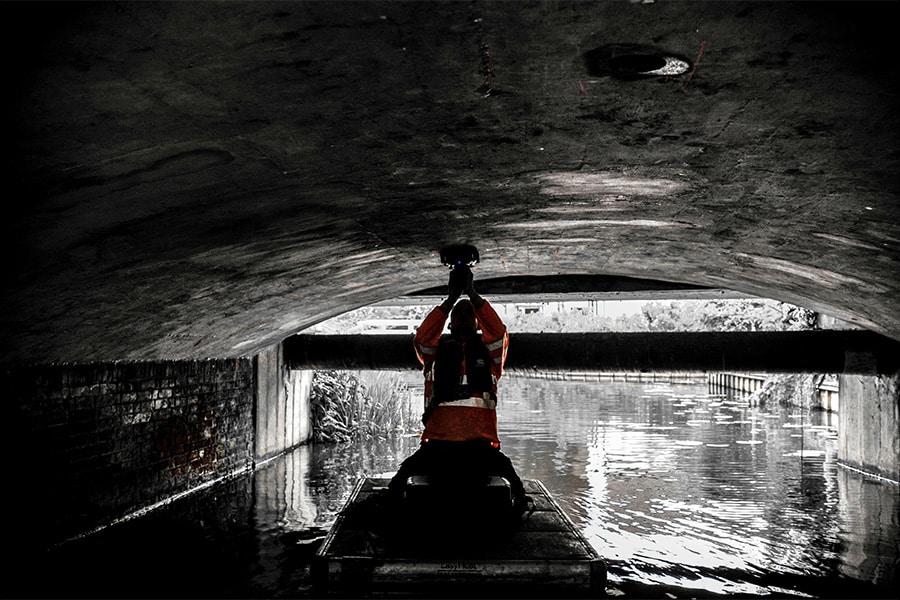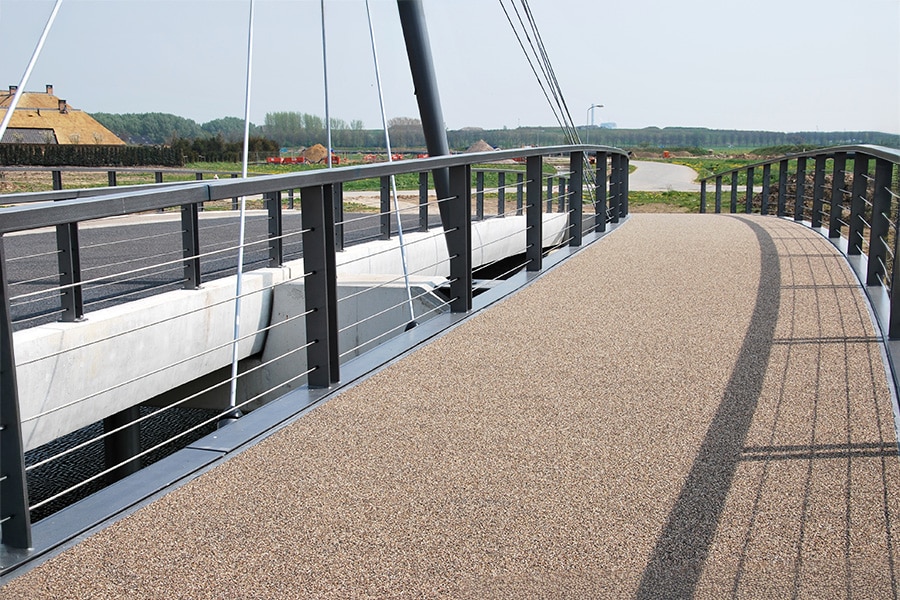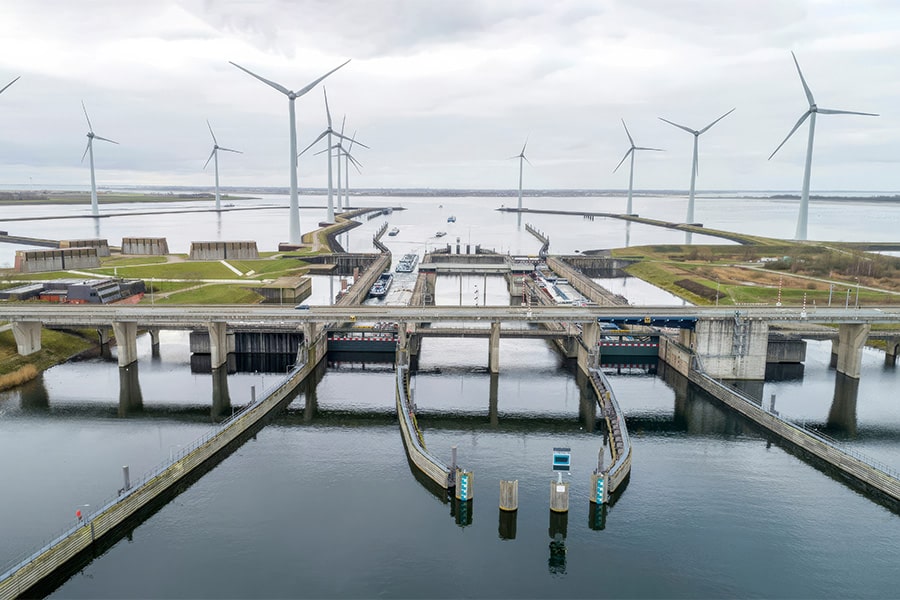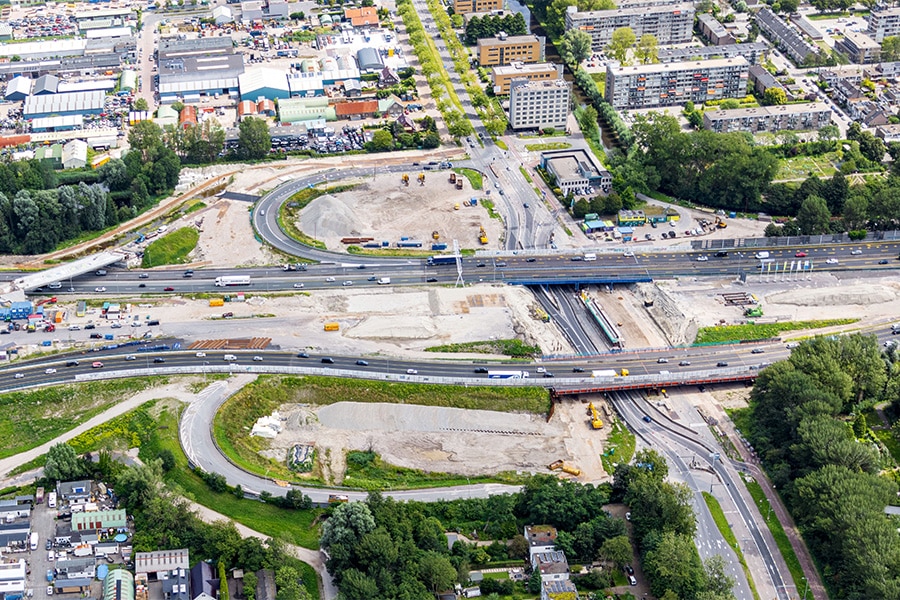
Unique approach to consolidation Marker dikes
In reinforcing the Markermeer dikes, the Alliance is eagerly using Cofra's expertise. Thanks to (vacuum) consolidation techniques, the subsoil, which is susceptible to settlement, is stabilized (faster). In one particular dyke section, this is even a real world first. An interview with Wiegert Dijkkamp, project manager at Cofra Nederland.
Cofra has a long track record in the field of (vacuum) consolidation. "Our vertical drainage techniques are widely used worldwide on a wide variety of projects," Dijkkamp begins. "Because of the weak subsoil here on the Markermeer dikes, we were called in at an early stage to shed our light on accelerating the settlement process. In this case, the majority of the dikes are being widened rather than raised, with additional weight being applied to the poorly permeable weak clay and peat layers."

Innovative solutions
As a 100% subsidiary of Alliance partner Boskalis, Cofra is known for its innovative solutions. "With almost a hundred years of experience, we are able to come up with ready-made solutions for any land improvement project," Dijkkamp continues. "Such was the case with the Markermeer dikes, where many millions of linear meters of vertical drainage were applied. In the preliminary phase, in cooperation with the Alliance, we conducted a pilot at Schardam to see which methodology lends itself best to this dike reinforcement task. We are dealing here with an extremely weak subsoil. Think of it as a poorly permeable sponge that will collapse as soon as weight is put on it. Because of the poor permeability, however, this is not possible, causing a lot of water overstrain in that sponge. With our vertical drainage method, that 'overstrained' groundwater is removed from the soil at an accelerated rate, which accelerates the settlement, so that you can raise the embankment and deliver it sooner. This is also accompanied by an increase in the strength of the subsoil and thus the stability of the dike."

Positive effect on strength development
Cofra has several vacuum consolidation systems. "Besides the 'normal' vertical drainage with MebaDrain (without vacuum), we have three methods with BeauDrain, BeauDrain-S and a foil variant that speed up the process by applying a negative pressure," Dijkkamp explains. "The difference between the two BeauDrains lies in the fact that with the BeauDrain-S system the drains are interconnected, where with the normal BeauDrain a long strand of drains is installed with a plow.
In addition, we frequently use the foil consolidation method. Each system has its advantages and disadvantages and its own solution to overcome vacuum loss in sand layers. Thus, the choice is made according to the situation. For some specific dike sections, "ordinary" vertical drainage did not offer a solution due to a desire for strength increase. Reason to try BeauDrain-S and the foil consolidation method in a test section in Schardam in 2016. Our geotechnical department, in cooperation with Fugro, performed a large number of measurements there. This showed that the application of vacuum indeed has a positive effect on the strength development of the subsoil and that BeauDrain-S came out best for these critical locations."

World first
The way BeauDrain-S is applied at these critical locations is unique worldwide. Dijkkamp: "With the test section, we were able to demonstrate that the subsurface 'remembers' its vacuum and thus its strength. Normally this technique is designed with a settlement criterion as a starting point. In this case, the test section looked at the correlation between pore pressure drop and soil strength increase. This showed that the sponge remains compressed, so to speak, when we release the pressure and turn off the pumps. The application has advantages within the design with regard to the combination of settlement/time, stability, over height limitation and being able to omit supporting berms. The latter is a particularly important factor in this project because of its scenic integration. To our knowledge, this approach is unique within the Netherlands, but also internationally."

Mini probes
Cofra has since installed many millions of meters of vertical drainage on the Markermeer dikes. "We started 'pricking' in subarea north in early 2020 and are now active in subarea middle and south," Dijkkamp knows. "Our machinery has developed to the point where we can make enough speed to stay ahead of the sand supply. Every day we pierce about a thousand drains per rack, whose exact position and indentation force we register. So every drain in fact provides a mini-sounder, valuable information for the Alliance. Ultimately, 5 million running meters of MebraDrain and 90,000 m2 to BeauDrain, spread over a number of levee sections. All in all, serious quantities for us as well. However, we have sufficient capacity to produce such projects in our own factory in Amsterdam, deliver and install them on site. It is not only the numbers that make the work so special for us, but also our involvement right from the design phase in 2016. "Our role is so much bigger than just supplying and installing. It has even led to a real world first."



